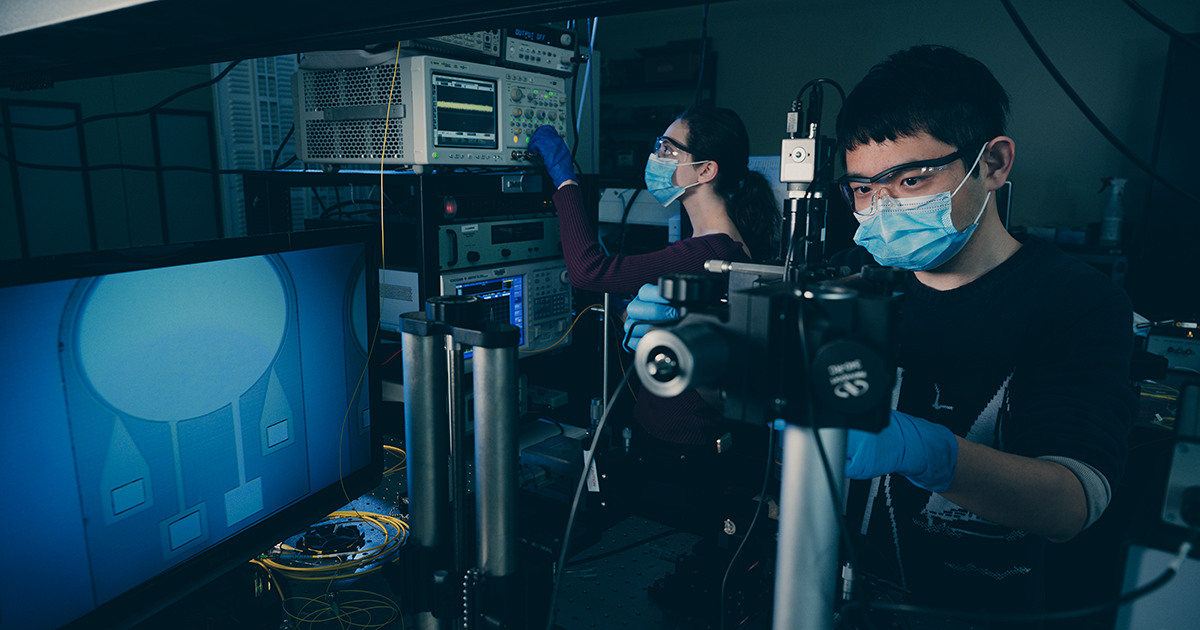PhD students win Best Paper Award at IEEE MEMS 2023

Two PhD students in Purdue University’s Elmore Family School of Electrical and Computer Engineering recently won the Best Paper Award at the IEEE MEMS 2023 conference. Hao Tian and Alaina G. Attanasio are students of Sunil A. Bhave, professor of electrical and computer engineering. The paper, entitled “Programmable Silicon Nitride Photonic Integrated Circuits,” was presented at the 36th IEEE International Conference on Micro Electro Mechanical Systems (MEMS 2023) in Munich, Germany. The research is a multi-national collaboration between Bhave’s OxideMEMS Lab at Purdue University and Professor Tobias Kippenberg’s LPQM Lab at EPFL in Lausanne, Switzerland.
The technology combines wafer-scale production and integration of photonic integrated circuits with piezoMEMS actuators with 100% yield in university cleanroom. Using thin-film PZT technology, stress-optic tuning of photonic integrated circuits can achieve optical resonance alignment not only between micro-resonators on the same chip, but between different chips. This provides a pathway forward stress-optic tuned multi-chip photonic+MEMS modules.
“This technology provides us a solution to control the silicon nitride photonic circuits with fast speed and low power,” says Tian. “This will become a highly demanding technology in future LiDAR, Photonic computing, and optical metrology and spectroscopy.”
The research is supported by a seedling from DARPA MTO and travel is supported by a NSF International Collaboration Supplements in Quantum Information Science and Engineering Research. The Purdue-EPFL hybrid technology platform currently targets LIDAR and quantum transduction. The researchers aim to leverage its high yield and versatility for next generation sensing, computing and digital communication.
Co-authors on the paper include Anat Siddharth, Andrey Voloshin, Viacheslav Snigirev, Grigory Lihachev, Andrea Bancora, Vladimir Shadymov, Rui N. Wang, Johann Riemensberger, and Tobias J. Kippenberg from EPFL.
